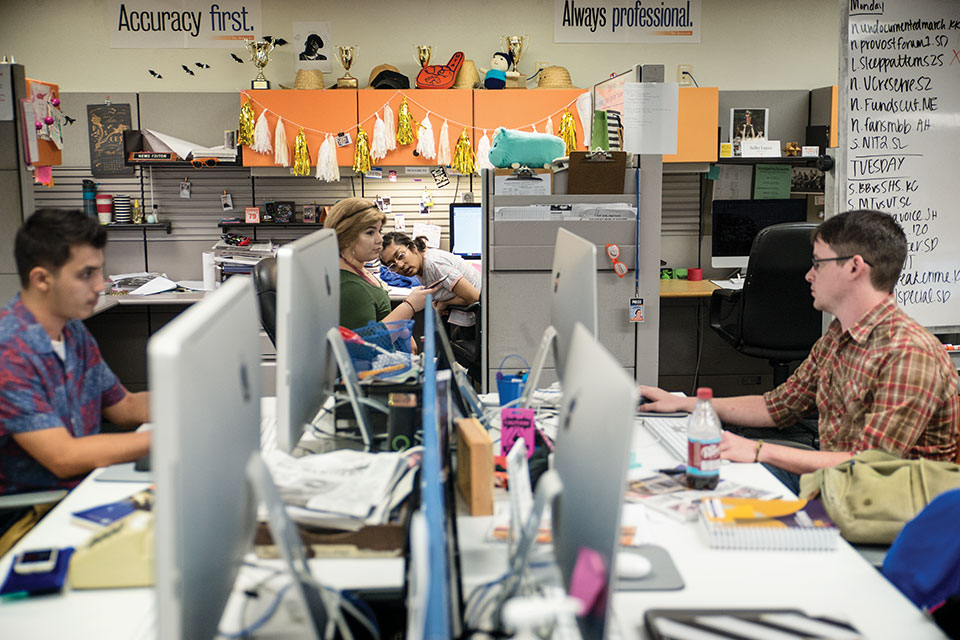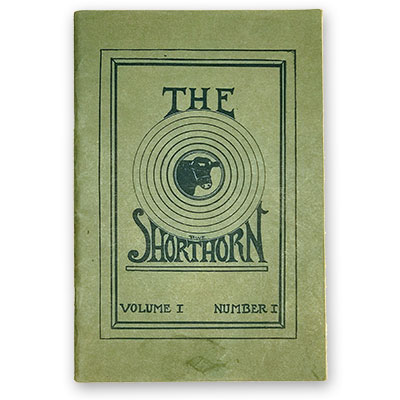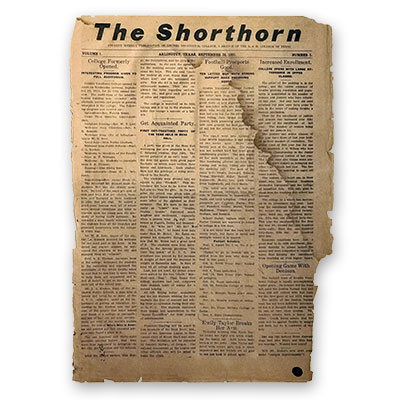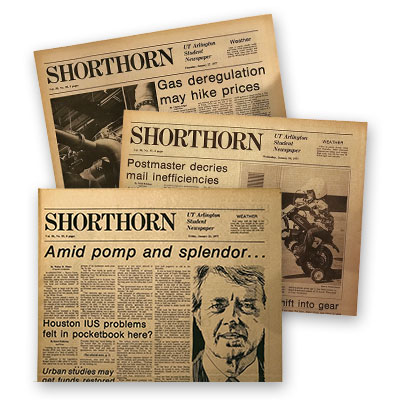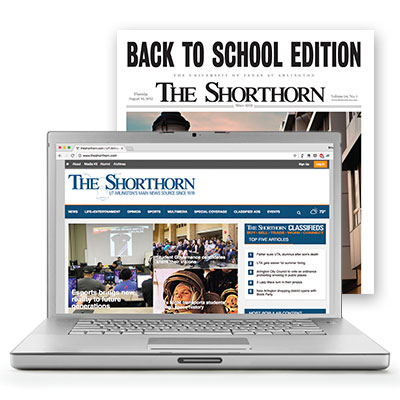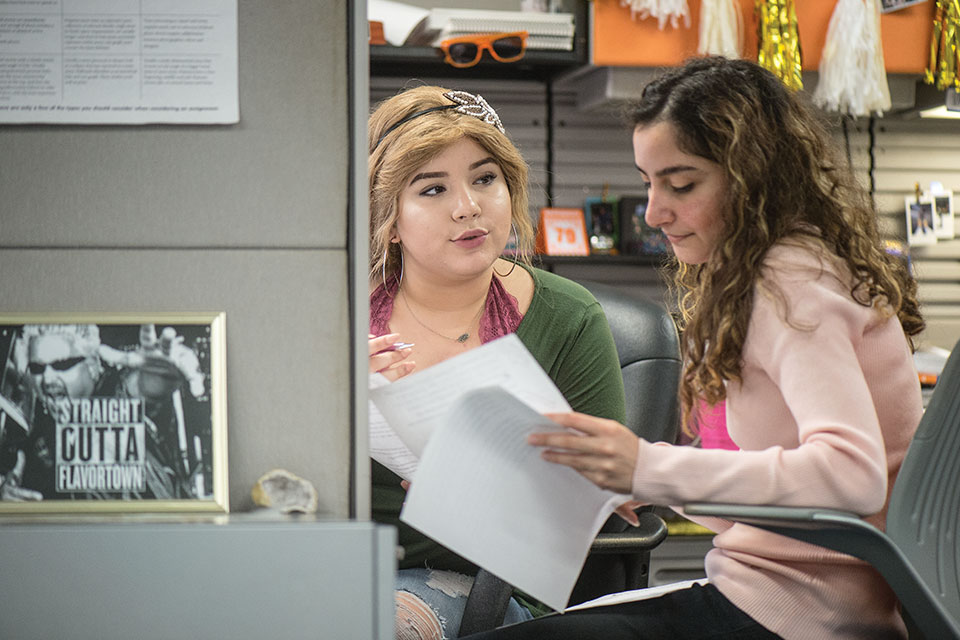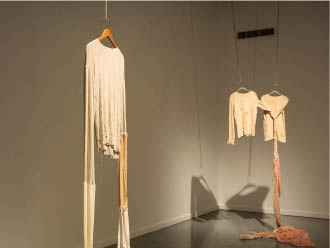In a quiet newsroom, a computer monitor blinks to life, a precursor of the activity to come. Some 50 writers, editors, photographers, and designers descend to the E. H. Hereford University Center basement. Soon the room is bustling as staff members produce content for The Shorthorn website—which already has more than 1.2 million views this academic year—and for the 10,000 newspapers distributed weekly around the campus and to local businesses.
The Shorthorn is a compilation of news and events happening around the UTA campus, but in the hands of the reader, it becomes something else: not only a compendium of information, but also access to the bigger picture of life at UTA and a strengthened connection to the Maverick community.
Now in its 98th year of publication, the newspaper embraces the dichotomy of the journalism industry at large, where tradition and evolution must stay in lockstep. The Shorthorn's dedication to staying true to journalistic fundamentals while pushing boundaries is evident in the prodigious skills students develop while working there. The journalists, designers, multimedia staff, and communication experts of tomorrow are honing their crafts on the UTA campus today.

